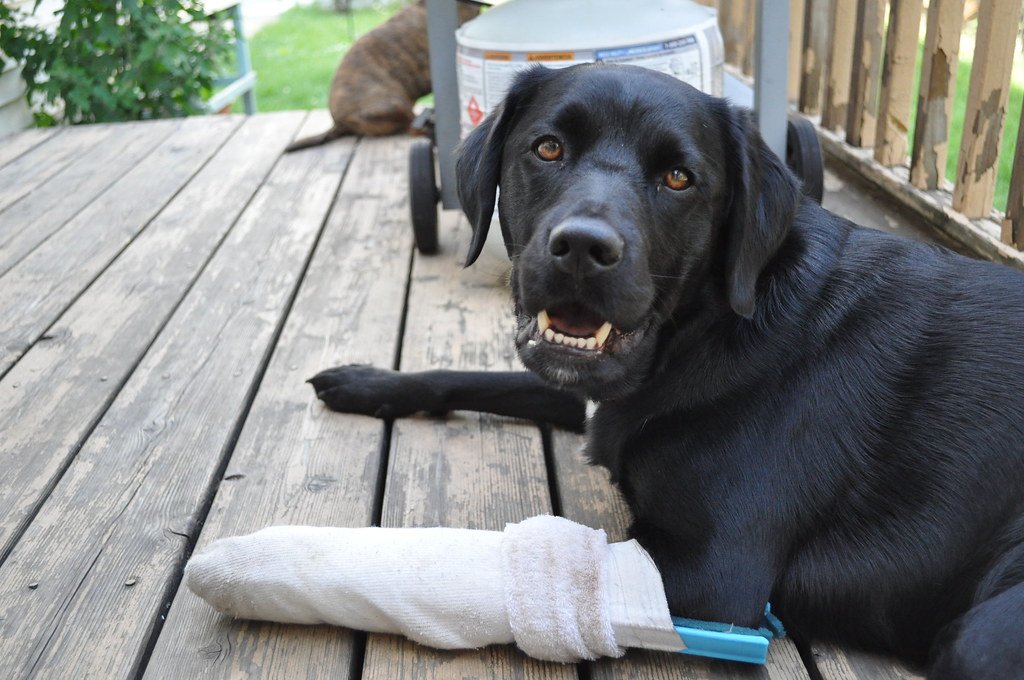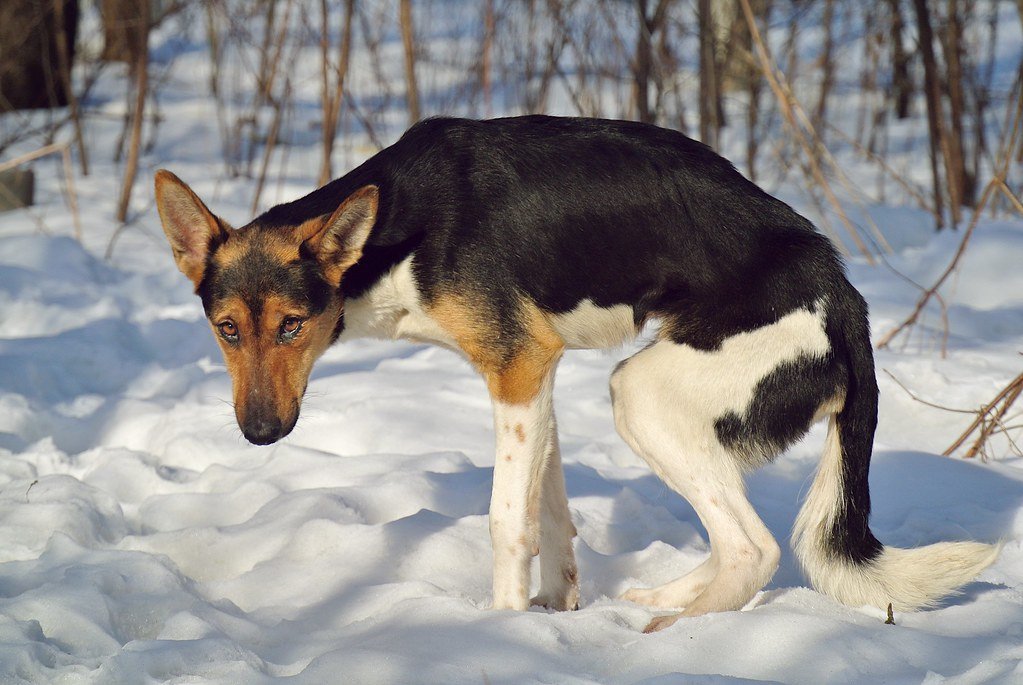Have you ever looked into a dog’s eyes and felt an ache in your heart, sensing something just isn’t right? Dogs can’t speak our language, but their bodies and behaviors can scream for help in ways that are impossible to ignore—if you know what to look for. It’s shocking how many pups quietly suffer, their pain hidden behind wagging tails and hopeful gazes. Whether you’re a lifelong dog lover or just beginning to care for furry friends, understanding the warning signs of abuse could mean the difference between ongoing pain and a second chance at happiness for a suffering animal. Let’s pull back the curtain on the eight most telling signs a dog is being abused—because every dog deserves a life free from fear.
1. Fearful or Submissive Behavior

One of the most heartbreaking signs of abuse in dogs is an extreme fear of people, especially sudden movements or loud voices. If a dog cowers, tucks its tail, or flattens its body to the ground when approached, it’s not just being shy—it could be a sign it’s been hurt before. Sometimes, even the gentle act of reaching out a hand can cause them to flinch or even urinate in fear. This isn’t just a quirk; it’s a survival response built from repeated negative experiences.
Owners or rescuers might notice a dog that constantly tries to hide or avoids eye contact altogether. Submissive urination, trembling, or frozen stillness are red flags. Imagine living in a world where every shadow could mean pain—this is the reality for many abused dogs. These behaviors are their way of saying “please don’t hurt me,” even if you’d never dream of doing so.
2. Unexplained Injuries or Scars

Dogs are playful creatures, and a scrape or bruise now and then is normal. But when you see repeated injuries—like cuts, burns, limping, or scars in various stages of healing—it’s time to worry. Injuries that don’t match the story you’re told, or wounds left untreated, are glaring signs something sinister may be happening behind closed doors.
It’s almost impossible to forget the sight of an animal with a matted coat hiding a patchwork of bruises or raw skin. Sometimes, even hair loss in odd patches or missing fur can point to rough handling or worse. These physical signs are the silent testimonies of pain—proof that someone has failed to protect, or worse, intentionally harmed them.
3. Extreme Aggression or Withdrawal
Not every abused dog will shrink away—some lash out. If a dog reacts with sudden, intense aggression, snapping or biting without clear reason, it could be a desperate act of self-defense. Abuse can teach dogs that the world is a dangerous place where only aggression keeps them safe. This isn’t “bad dog” behavior; it’s survival.
On the flip side, some dogs completely withdraw, showing no interest in play, affection, or even food. They may seem listless, depressed, or uninterested in the world around them. Both extremes—aggression and withdrawal—are cries for help. It’s a heartbreaking reminder of how deeply mistreatment can scar a gentle spirit.
4. Poor Physical Condition

A dog’s body can reveal a lot about its care. Abused dogs are often thin, with ribs or hip bones jutting out, and may have a dull, patchy coat. You might notice overgrown nails, dirty fur, or a general appearance of neglect. These are not just cosmetic problems; they’re signs the dog’s basic needs are being ignored.
Lack of access to clean water, food, or proper shelter can lead to dehydration, malnutrition, and even more severe health issues. If a dog seems constantly hungry, thirsty, or sickly, there’s a good chance it’s not being cared for properly. No animal should have to fight for the basics of survival.
5. Reluctance to Go Home or Toward Certain People

Ever seen a dog dig its heels in, shake, or refuse to walk in a certain direction? When a dog resists returning to a specific place or person, it can be a powerful indicator that something negative is associated with that environment. Dogs remember where they’ve been hurt and will try to avoid it at all costs.
This sign is especially noticeable in foster situations or during walks. A dog that is terrified to enter its own home or cringes from its owner’s touch is sending a clear message. It’s as if their instincts are screaming, “Anywhere but here!”—a heartbreaking plea for someone to listen and intervene.
6. Constant Chaining or Confinement
While some owners use leashes or crates for brief periods, constant chaining or confinement is a form of abuse in itself. Dogs are social, energetic creatures who need freedom to move, explore, and interact. Being tied up or locked away for hours—or even days—can cause both physical and psychological harm.
You might see sores around the neck from tight collars, or a dog pacing endlessly in a small area. Over time, this forced isolation can lead to anxiety, depression, and even self-harm. It’s a silent kind of suffering, but no less devastating than physical wounds.
7. Visible Fear of Everyday Objects or Actions

Abused dogs often develop specific fears that seem odd or out of place. A broom, a newspaper, or even a raised hand can send them into a panic. They’ve learned to associate these everyday objects with pain or punishment, and their reactions are often intense—barking, hiding, or shaking uncontrollably.
This fear can also extend to simple actions, like being picked up, putting on a leash, or hearing certain sounds. It’s as if the world is full of hidden dangers, and the dog has to be on high alert at all times. Watching a dog live in constant fear is a powerful motivator to step in and help.
8. Lack of Socialization or Training

Dogs learn how to behave from positive interactions and gentle guidance. But abused dogs are often denied the chance to learn, either through isolation or constant punishment. They may not know how to greet people, play with other dogs, or respond to basic commands.
This lack of socialization shows up as awkwardness, fear, or confusion in new situations. They might freeze, bark excessively, or seem lost when faced with everyday experiences. It’s not their fault—they just haven’t been given the love and patience every dog deserves.
Recognizing the signs of abuse in a dog is the first step toward helping them find safety, healing, and the love they deserve. From fearful behavior to physical injuries or sudden aggression, these red flags should never be ignored. Dogs can’t speak for themselves—but they communicate clearly when something is wrong. By staying observant and compassionate, you can be their voice—and potentially change the course of their life forever.

Linnea is a born and bred Swede but spends as much time as possible in Cape Town, South Africa. This is mainly due to Cape Town’s extraordinary scenery, wildlife, and atmosphere (in other words, because Cape Town is heaven on earth.) That being said, Sweden’s majestic forests forever hold a special place in her heart. Linnea spends as much time as she can close to the ocean collecting sea shells or in the park admiring puppies.





